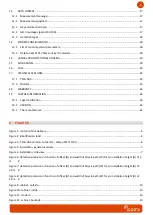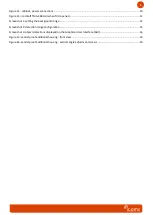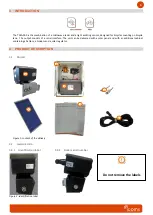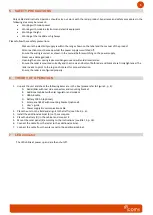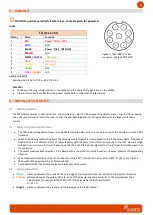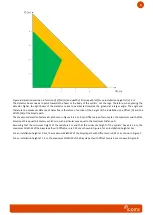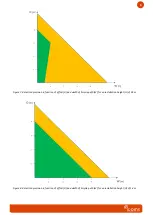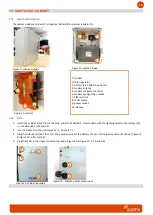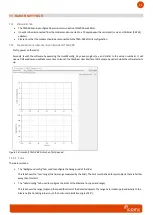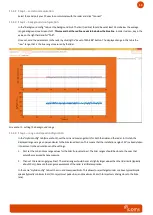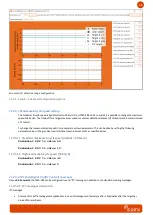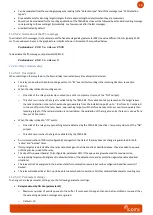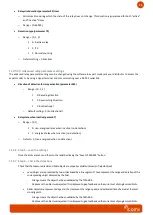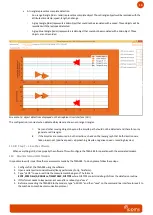
14
•
Can be separated from the counting messages by looking to the “detection type” fie
l
d of the message (see “
”).
•
Are available only for incoming targets (targets that are approaching the detector when they are measured).
•
Should not be considered for the counting application of the TMA-3B3 as they will be followed by a standard counting message
corresponding to the same target (immediately, or a few seconds after the fast message).
•
Are disactivated by default.
11.2.5.2.2
Activation of the ITC messages
To activate the ITC messages, it is necessary to set the fixed message delay (parameter 298) to a value different from 0, typically 2500
ms. Those values can be set in the graphical user interface shown in Screenshot 2 as specified below:
Parameter 298 to value 2500
To deactivate the ITC messages, set parameter 298 to 0:
Parameter 298 to value 0
11.2.5.3
Dry contact relay
11.2.5.3.1
Description
When switching on the relay feature, the internal relay is activated every time a bicycle is detected.
•
The relay can be either linked
to counting events or to “
ITC
” events (fast counting in the incoming direction
, see section
•
When the relay is linked to counting events:
o
One click of the relay per bicycle counted (one click = temporary closure of the
“
NO
”
output).
o
This click occurs when the target is validated by the TMA-3B3. This validation takes place when the target leaves
the radar detection zone (which extends approximately from the installation point up to ~ 8 m from it). Compared
to the cut-off point of the laser beam, approaching targets will therefore be taken into account more quickly than
receding targets. If the radar detection is not validated, the validation of the target seen by the laser is done after a
timeout of 9 seconds.
•
When the relay is linked to
“
ITC
” events:
o
One click of the relay per approaching bicycle detected by the TMA-3B3 (one click = temporary closure of the
“
NO
”
output).
o
This click occurs when the target is validated by the TMA-3B3.
•
A minimum duration of 100 ms (configurable) during which the state of the relay does not change, is guaranteed for both
"active" and "inactive" times.
•
If more targets are detected than the relay can output given the time constraint described above, they are added to a queue
until they can be issued to the relay.
•
The size of this queue is fixed at 10 (configurable, parameter 041). If the queue size grows beyond the maximum size,
corresponding targets will be ignored (to allow limitation of the detection rate and as protection against possible abnormal
situations).
•
The relay will not be energized in the inactive state (for consumption reasons) but can be configured in positive security if
desired.
•
The relay will make a click at start-up (to be able to easily check its operation). All other clicks will take place for counting only.
11.2.5.3.2
Parameter settings
To change the relay parameter settings, use the following parameter settings:
•
Relay maximum buffer size (parameter 41)
o
Maximum number of events queued in the buffer. If more events happen than can be transmitted or queued, they
the exceeding detection messages are ignored.
o
Default = 10


